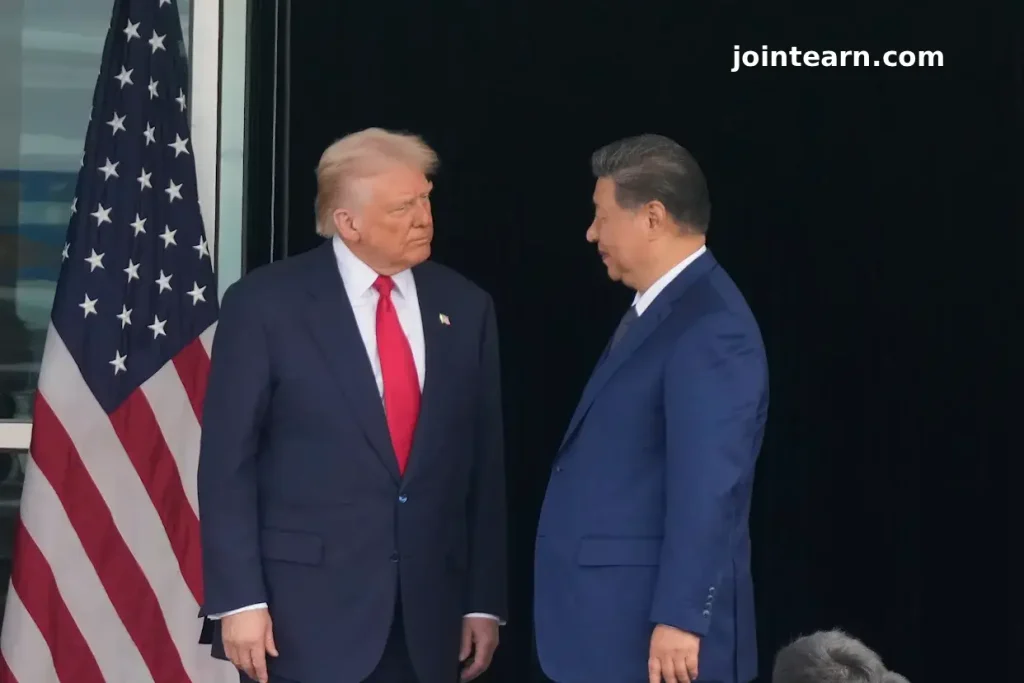
BANGKOK, Oct. 30, 2025— The long-anticipated meeting between U.S. President Donald Trump and Chinese President Xi Jinping in South Korea delivered significant developments in the global trade landscape. The leaders, meeting for nearly two hours during Pacific Rim summit sessions, agreed to roll back select tariffs, resume agricultural trade, and restore cooperation in critical sectors such as rare earths and semiconductors.
While the summit was hailed as “amazing” by Trump, Chinese statements remained measured, underscoring that no comprehensive trade deal has yet been finalized.
1. Tariff Reduction and Fentanyl Cooperation
Trump confirmed that the U.S. will reduce tariffs on Chinese fentanyl-related goods from 20% to 10%, part of a broader effort to combat the synthetic opioid crisis devastating American communities.
According to Trump, Xi promised to “work very hard to stop the flow” of precursor chemicals used in fentanyl production. China’s commerce officials confirmed the change, noting that average U.S. tariffs on Chinese imports will now fall to 47% from 57%.
Both countries pledged to strengthen law enforcement cooperation on drug trafficking prevention, marking a rare moment of alignment amid escalating tensions.
2. Soybean and Farm Product Purchases
In a major win for U.S. farmers, Trump announced that Beijing has committed to purchasing “tremendous amounts” of American soybeans, sorghum, and agricultural products.
U.S. Treasury Secretary Scott Bessent later detailed that China will import 25 million metric tons of soybeans annually, with 12 million tons expected to be shipped before January 2026.
Trump celebrated the deal on Truth Social, urging farmers to “buy more land and bigger tractors.” The agreement is expected to bring relief to a sector that has struggled under the weight of tariffs and lost market access since 2018.
“It’s a big win for the American heartland,” Trump said aboard Air Force One. “President Xi and I have made incredible progress.”
3. Semiconductor Sales Discussions
The two leaders also addressed U.S. restrictions on advanced semiconductor exports. Trump said Beijing would negotiate directly with Nvidia, America’s top chipmaker, to purchase select chips—excluding its next-generation Blackwell AI models.
“We make the best chips in the world, and Nvidia’s the leader,” Trump remarked.
This limited resumption of chip sales could help stabilize global AI and tech supply chains, though strict U.S. export controls on sensitive technologies remain in place.
4. Rare Earths and Energy Commitments
China agreed not to impose export controls on rare earth elements for at least a year—a move that safeguards key materials used in electric vehicles, defense, and aerospace manufacturing.
Trump emphasized that the “roadblock is gone,” framing the concession as critical to U.S. industrial competitiveness.
Additionally, Trump revealed that China will explore energy purchases from Alaska, potentially opening a new front in U.S. oil and gas exports to Asia.
5. TikTok and Broader Economic Dialogue
Beijing stated it will continue to work with Washington to resolve ownership and data security concerns surrounding TikTok, signaling that the issue remains under negotiation.
While no final deal was reached, both sides expressed interest in constructive dialogue to avoid app bans or forced divestitures.
6. Relief for Businesses and Consumers
Economists hailed the partial tariff rollback as “welcome relief” for American consumers and importers.
Dr. Mary Lovely of the Peterson Institute for International Economics noted that the reduction “lessens pressure on companies to relocate production away from China” but warned that “most structural issues remain unresolved.”
In essence, the summit achieved short-term trade stability without addressing deeper strategic divides—from Taiwan and technology competition to intellectual property enforcement.
7. Xi’s Perspective: Long-Term Stability Over Retaliation
Chinese President Xi Jinping stressed that the U.S. and China should prioritize long-term cooperation over confrontation.
He called for both countries to “deliver tangible results that bring peace of mind to China, the U.S., and the world,” and proposed collaboration on telecom fraud prevention, AI governance, anti-money laundering, and global health.
“Dialogue is better than confrontation,” Xi said. “Major powers must act with a sense of responsibility.”
8. The Road Ahead
The Trump–Xi summit signals a thaw in relations after years of economic friction, yet experts caution that fundamental differences persist. With U.S. tariffs still averaging nearly 50% and geopolitical tensions in the Indo-Pacific intensifying, both sides must manage a fragile equilibrium.
Still, Thursday’s meeting may represent a turning point toward measured coexistence—balancing competition with cooperation in trade, security, and global governance.
Leave a Reply